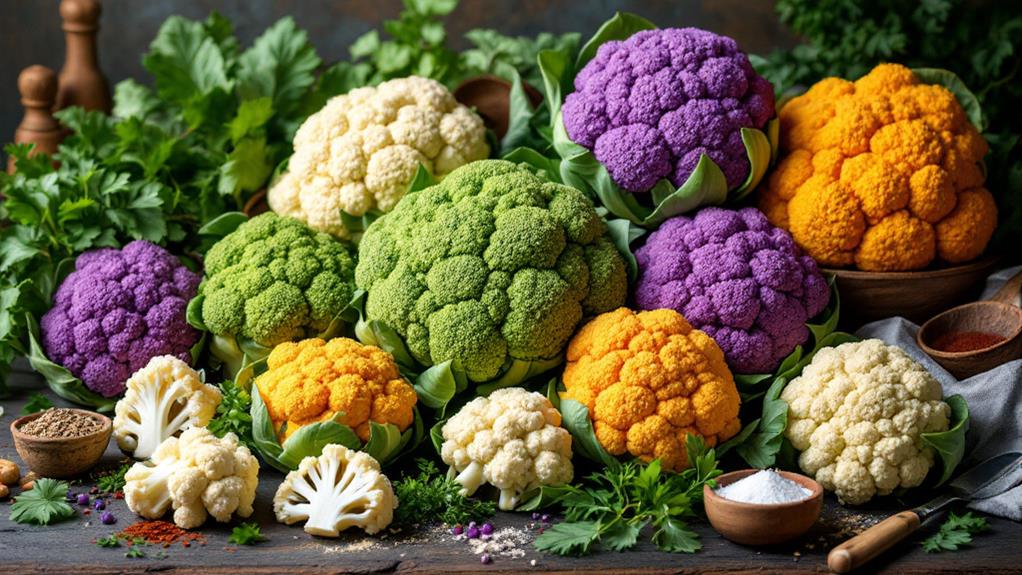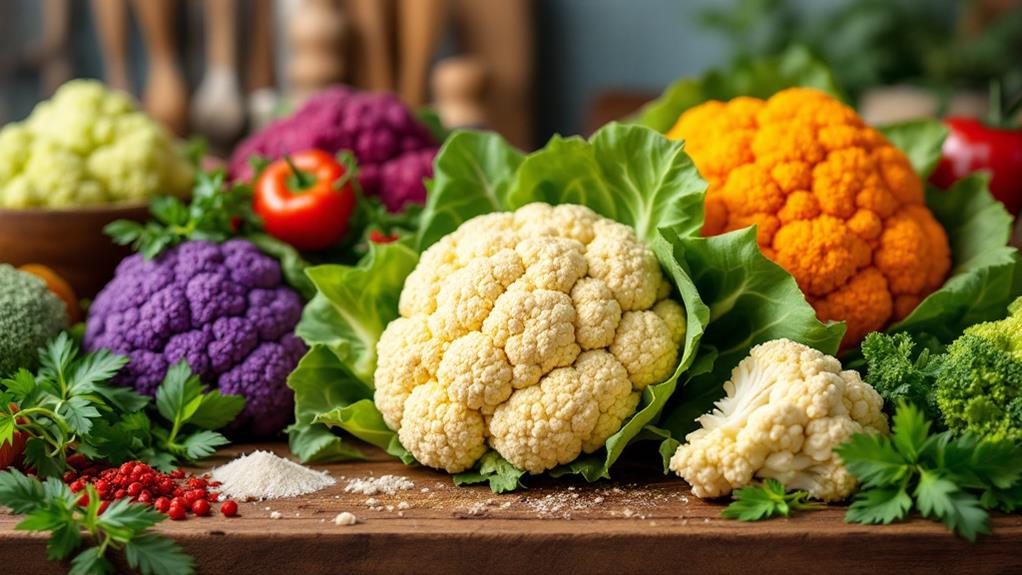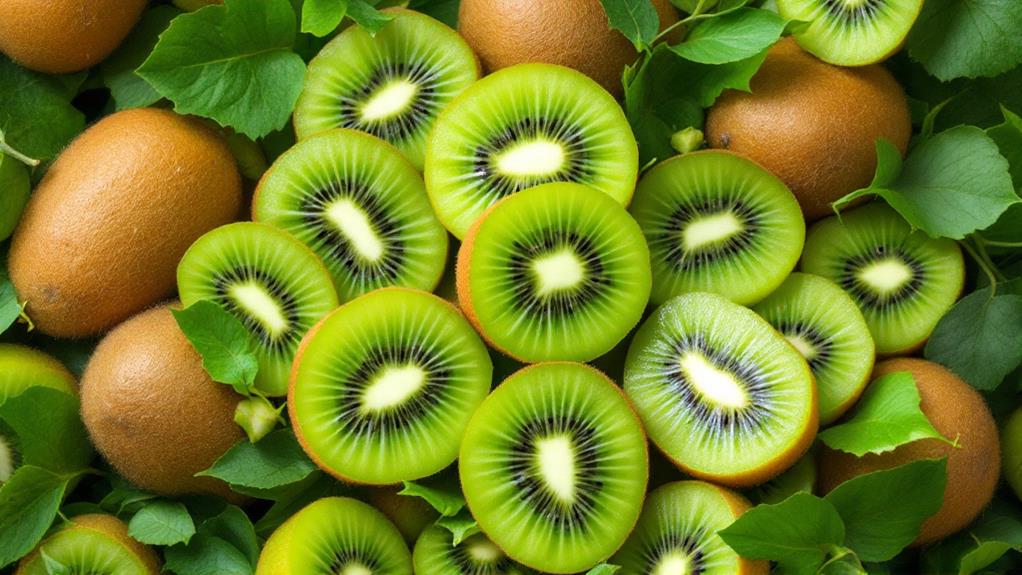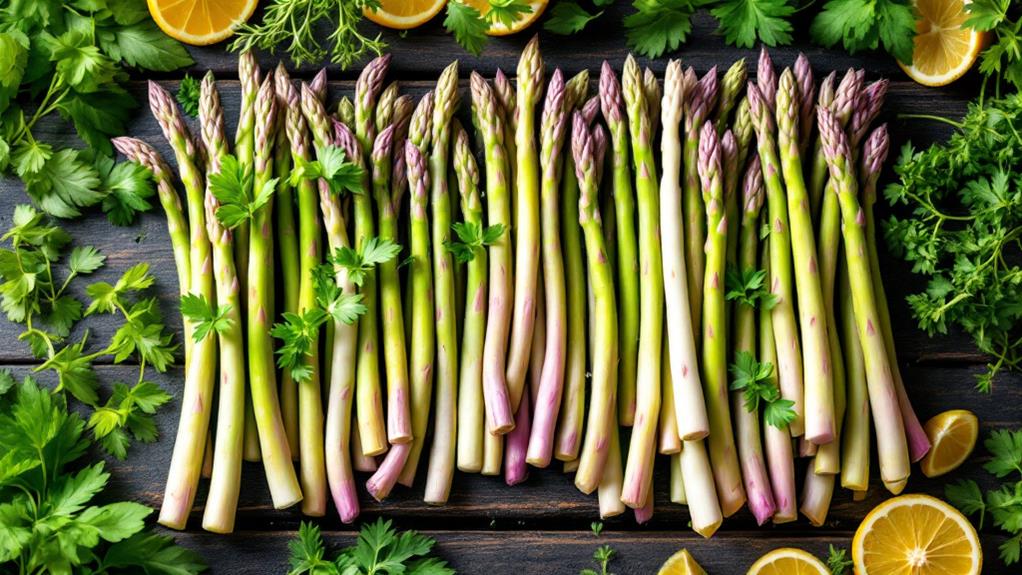The Ultimate Guide to Cauliflower: Types, Benefits, and Cooking Ideas

Cauliflower isn't just your average vegetable; it's incredibly versatile and packed with health benefits. You'll find types like white, purple, and even Romanesco, each contributing unique flavors and nutrients to your meals. It's low in calories and rich in vitamins like C, K, and B6, and offers antioxidants that support your immune system and heart health. Cooking cauliflower is easy—roast it for sweetness, steam to preserve nutrients, or blend for creamy soups. Regardless of you're making cauliflower rice or pizza crust, it's a nutritious enhancement to your diet. There's so much more to uncover about this nutritious powerhouse.
Types of Cauliflower
When exploring types of cauliflower, you'll find a variety of colors, flavors, and textures that can improve your dishes. As one of the most versatile vegetables, cauliflower serves as a nutritional powerhouse among cruciferous vegetables. The most familiar, White Cauliflower, boasts a mild flavor, making it ideal for rice, mash, and soups. It's a staple in many kitchens due to its ability to blend seamlessly into a wide range of recipes.
If you're looking for a pop of color, Purple Cauliflower is an excellent choice. It contains antioxidants and offers a sweeter taste, perfect for salads or roasting. For a colorful twist, Orange Cauliflower, rich in beta-carotene, delivers a nutty flavor and can transform dishes like gratins into a delightful experience.
Romanesco Cauliflower, with its striking, spiky geometric shape, provides a nuttier taste, making it great for steaming or stir-frying. Its unique appearance will surely impress your guests. Finally, Mini Cauliflower, with its smaller heads, offers a tender texture, ideal for portion control and quick cooking. Each variety offers a significant amount of health benefits, adding both nutrition and visual appeal to your meals.
Nutritional Benefits
Cauliflower nutrition offers a wealth of benefits that can improve your diet significantly. At just 25-27 calories per cup, cauliflower is a low-calorie food that supports weight management without skimping on vital nutrients. It's an excellent choice if you're looking to shed some pounds or maintain a healthy weight.
Rich in vitamin C, cauliflower provides 77% of your daily recommended intake in just one serving. This high vitamin C content amplifies immune function and improves skin health, making cauliflower a smart addition to your meals. Furthermore, with 2 grams of protein per cup, it provides a plant-based protein source that fosters muscle growth and a balanced diet.
Cauliflower's high fiber content, ranging from 2-3 grams per cup, plays an important role in promoting digestive health. The fiber not only aids digestion but also helps you feel full longer, reducing the temptation to snack between meals. In addition, cauliflower is a good source of vitamin K, offering about 20% of the daily value per serving. This vitamin is vital for bone health and proper blood clotting. Including cauliflower in your diet guarantees you're getting diverse nutritional benefits.
Unique Health Compounds

Who would've thought that a humble vegetable could pack such a powerful punch? Cauliflower is loaded with unique health compounds that can enhance your well-being. Here's what you should know:
- Sulforaphane: This compound is renowned for its anti-cancer properties. It's particularly effective against breast and prostate cancers, making it a significant addition to your diet.
- Indoles and Glucosinolates: Indoles stimulate detoxifying enzymes in your liver, aiding in cancer prevention and general health. Alongside glucosinolates, these compounds protect your cells from free radical damage, showcasing cauliflower's potent antioxidant effects.
- Carotenoids and Tocopherols: These antioxidants support immune function and help reduce inflammation throughout your body. Including cauliflower in your meals can give your immune system a well-deserved enhancement.
- Fiber Content: Cauliflower's high fiber content aids digestion and promotes gut health. It supports beneficial gut bacteria, enhancing your digestive system's efficiency and general wellness.
Incorporating cauliflower into your meals not only enriches your diet with these health-enhancing compounds but also supports essential bodily functions and defenses. Welcome the power of cauliflower and enjoy its myriad benefits!
Cooking Techniques
Exploring diverse cooking techniques can transform cauliflower into a delicious and versatile ingredient. Roasting is a fantastic way to improve its natural sweetness while achieving a crispy texture. Simply toss cauliflower florets with olive oil and seasoning, then bake at 425°F (220°C) for 25-30 minutes. This method brings out rich flavors and a satisfying crunch.
If you're aiming to preserve nutrients, steaming is your go-to technique. This gentle method keeps the cauliflower tender and lively. Steam the florets for about 5-7 minutes until they're fork-tender but not mushy. Steaming maintains the veggie's nutritional value and natural color.
For quick cooking, stir-frying is ideal. Use a hot pan with a small amount of oil, adding garlic or ginger for extra flavor. In just 3-5 minutes, you'll have cauliflower with a delightful crunch.
Blending cooked cauliflower into soups or purees offers a creamy texture without added calories. After cooking, blend it with vegetable broth and spices until smooth.
Lastly, grilling cauliflower steaks or whole heads infuses a smoky flavor. Slice thick pieces, brush with marinade, and grill for 6-8 minutes per side for a tender, charred finish.
Recipe Inspirations

Creativity takes center stage in relation to transforming cauliflower into mouthwatering dishes. With its superfood status, this versatile vegetable offers an abundance of cooking ideas that not only tantalize the taste buds but also provide significant health benefits. If you're aiming for weight loss or seeking low-calorie meal options, cauliflower should be your go-to ingredient.
Here's a list of culinary inspirations to get you started:
- Cauliflower Rice: By processing cauliflower florets into rice-sized pieces, you create a low-calorie, low-carb substitute for traditional rice. It's perfect for stir-fries or as a side dish, packing only 27 calories per cup.
- Mashed Cauliflower: Swap out your regular mashed potatoes with this lighter alternative. Boil, blend with garlic and cream, and enjoy a creamy, reduced-calorie side dish.
- Cauliflower Steaks: Slice into thick slabs, season, and roast. These hearty, flavorful "steaks" make a satisfying main course, enhancing the vegetable's unique texture.
- Buffalo Cauliflower Bites: Coat florets in spicy buffalo sauce and bake. They're a crispy, healthier alternative to traditional wings, ideal for snacks or game days.
Get inspired and raise your meals with these delicious cauliflower creations.
Selecting and Storing
When choosing cauliflower, verify you pick heads that are firm and tightly closed, free from dark or soft spots. These signs guarantee the cauliflower's freshness and quality, giving you the best flavor and texture. Once you've selected your cauliflower, storing it properly is key to maintaining its freshness. Keep the unwashed cauliflower in a perforated plastic bag and place it in the vegetable crisper drawer of your refrigerator. This method helps the cauliflower stay fresh for up to ten days.
If you've cut or riced the cauliflower, it's essential to use it within four days to preserve its ideal taste and quality. Cutting speeds up the spoilage process, so plan your meals accordingly. Should you notice any minor blemishes, such as brown spots, don't worry. You can trim these off without compromising the overall quality of your cauliflower.
To enjoy the best flavor and nutrient retention, aim to consume your cauliflower within four to five days of purchase. By focusing on selecting the right cauliflower and storing it correctly, you'll guarantee a delicious and healthy enhancement to your meals.
Pairing and Serving

Although cauliflower's mild flavor might seem unassuming, it pairs beautifully with a range of meats and dishes, offering versatility in your meals. When served as a side dish, cauliflower complements grilled chicken, beef, or fish, enhancing the complete meal experience. If you're looking for a nutritious supplement to appetizer platters or salads, try pairing raw cauliflower with dips like hummus or tzatziki. Its crunchy texture and subtle taste make it an ideal companion for these flavors.
To raise your cauliflower dishes, experiment with popular seasonings such as garlic, cumin, and paprika. These spices can transform roasted or grilled cauliflower into a flavorful side dish that's sure to impress. Fresh herbs like parsley or cilantro add a burst of freshness, regardless of whether you're serving it raw or cooked.
The versatility of cauliflower also allows it to be a substitute in numerous recipes. Consider using it in:
- Cauliflower rice: A low-carb alternative to traditional rice.
- Pizza crusts: Offering a gluten-free option that pairs well with different sauces and toppings.
- Mashed cauliflower: A creamy, healthier substitute for mashed potatoes.
- Cauliflower steaks: A hearty, vegetarian main course.
These recipes showcase cauliflower's adaptability and flavor-enhancing benefits.




